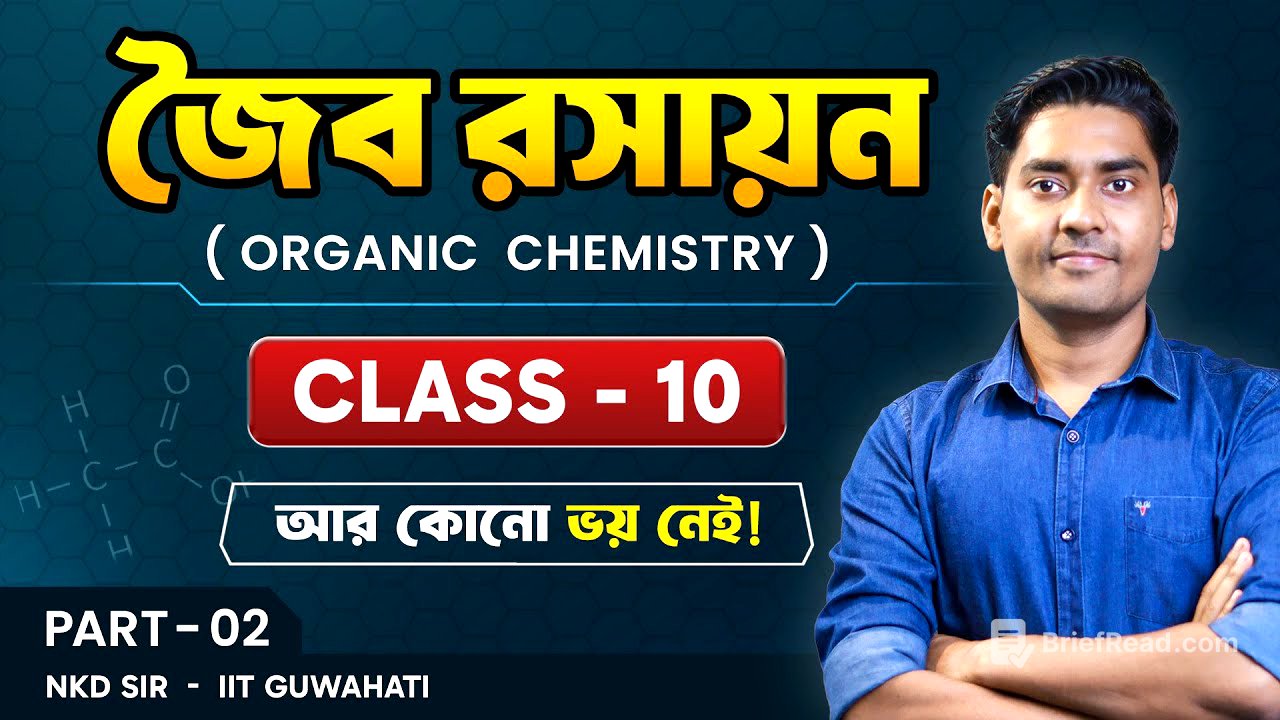TLDR;
This video provides an introduction to organic chemistry, focusing on hydrocarbons and their classification. It covers saturated and unsaturated hydrocarbons, including alkanes, alkenes, and alkynes. The video also explains the structure of ethane, ethylene, and acetylene, and introduces the concept of homologous series.
- Introduction to organic chemistry and hydrocarbons.
- Classification of hydrocarbons: saturated and unsaturated.
- Structure of ethane, ethylene, and acetylene.
- Explanation of homologous series.
Introduction [0:00]
The video starts with an introduction to organic chemistry, highlighting its focus on organic compounds. It mentions functional groups and their classification, setting the stage for a detailed discussion.
Hydrocarbon and their Classification /হাইড্রোকার্বন এবং তাদের শ্রেণীবিভাগ [2:32]
This section explains hydrocarbons as compounds made of carbon and hydrogen atoms. Hydrocarbons are classified into saturated and unsaturated types. Saturated hydrocarbons, also known as alkanes, have single bonds between carbon atoms. Unsaturated hydrocarbons include alkenes (with double bonds) and alkynes (with triple bonds). The general formula for alkynes is CnH2n-2, requiring at least one triple bond between carbon atoms.
Structure of Ethane, Ethylene, Acetylene/ইথেন, ইথিলিন, অ্যাসিটিলিনের গঠন [12:05]
The video explains the structure of ethane (C2H6), ethylene (C2H4), and acetylene (C2H2). Ethane features a single bond between two carbon atoms, each bonded to three hydrogen atoms. Ethylene has a double bond between the carbon atoms, and acetylene has a triple bond. The bond lengths and angles in these molecules are also discussed, with specific values provided for carbon-carbon and carbon-hydrogen bonds.
Homologous Series/সমগণীয় সিরিজ [29:39]
The concept of homologous series is introduced, explaining how compounds in the same series have similar chemical properties and a consistent difference in molecular structure (e.g., a CH2 group). Examples are given to illustrate how the series progresses, and the importance of proper notation (subscripts and superscripts) is emphasized. The video concludes by summarizing the key points discussed and encouraging viewers to engage with additional resources for further learning.
END /শেষ [40:53]
The video concludes by encouraging viewers to engage with additional resources for further learning.

![Incestuous fig wasps: death in paradise [HD]](https://wm-img.halpindev.com/p-briefread_c-10_b-10/urlb/aHR0cDovL2ltZy55b3V0dWJlLmNvbS92aS9CZzczeC1pd0lBWS9ocWRlZmF1bHQuanBn.jpg)







